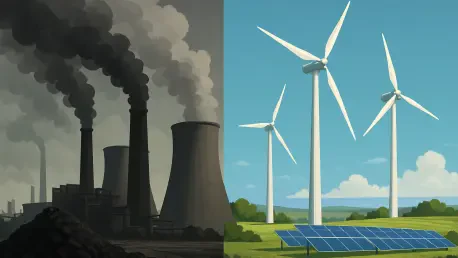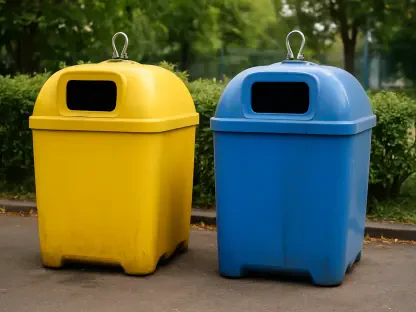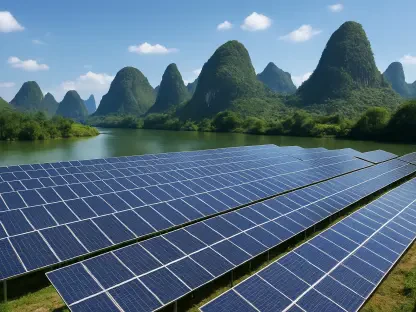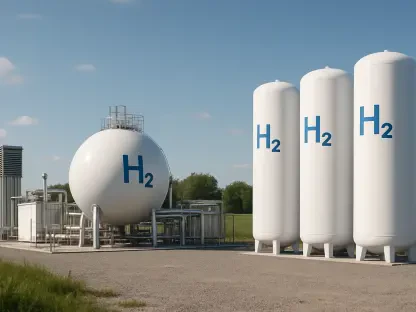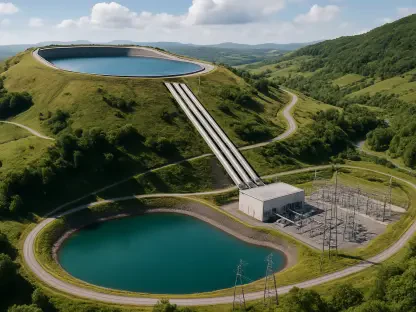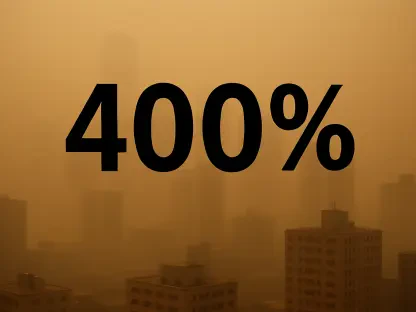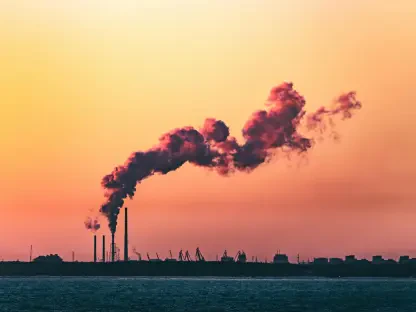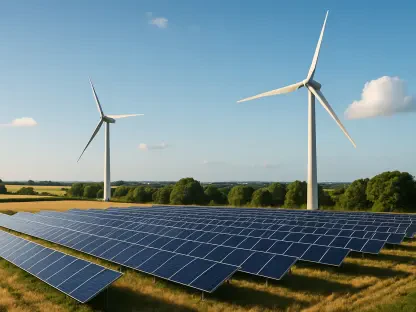In a world where blackouts can cripple hospitals, halt industries, and leave millions in the dark, the question of energy reliability looms larger than ever, especially when picturing a frigid winter night in Texas with the grid teetering on the edge of collapse as wind turbines freeze and demand soars. This isn’t a distant nightmare—it’s a stark reminder of the stakes involved in choosing between traditional thermal power plants and the rising tide of clean energy. As the push for sustainability clashes with the need for unwavering power, a fierce debate emerges: which source can truly keep the lights on when it matters most? This exploration delves into the heart of that tension, weighing the dependability of coal, gas, and nuclear against the promise of wind, solar, and storage.
Why Reliability Fuels a Heated Energy Debate
At the core of the energy conversation lies a fundamental conflict between environmental urgency and practical necessity. Climate change demands a rapid shift to renewables, with solar and wind often touted as the future of power generation. Yet, every time a storm disrupts supply or a heatwave spikes demand, doubts surface about whether these sources can deliver consistently. The tension isn’t merely academic; it shapes policy, impacts economies, and affects daily life across the globe.
This debate also carries emotional weight, as communities grapple with the consequences of power failures. From small businesses losing revenue to families enduring discomfort, the reliability of the grid is a deeply personal issue. As nations commit to ambitious carbon reduction goals, the question persists: can clean energy scale up without sacrificing the stability that thermal power has provided for decades? This dilemma sets the stage for a closer examination of what’s at stake.
The Critical Importance of a Stable Power Grid
A dependable energy supply is no longer just a convenience—it’s the backbone of modern society. Hospitals rely on uninterrupted electricity to sustain life-saving equipment, while data centers power the digital economy that underpins global communication. Even households expect 24/7 access to power for everything from heating to charging devices, making any disruption a significant concern.
As the United States accelerates its transition toward cleaner energy, apprehensions about grid stability intensify. Thermal power plants, including those fueled by coal, gas, and nuclear, have long served as the foundation of consistent supply. In contrast, renewables face criticism for their dependence on weather conditions, with solar panels idle at night and wind turbines stalling in calm air. Reliability often overshadows cost and sustainability in shaping energy strategies, highlighting the need to evaluate how different sources perform under pressure.
Comparing Thermal and Clean Energy on Reliability Metrics
Breaking down the reliability gap between thermal and clean energy reveals stark differences across key areas like consistency and capacity. Thermal plants, whether powered by coal, gas, or nuclear, provide continuous generation, unaffected by weather or time of day. Industry leaders have pointed out that 1 GW of thermal capacity offers the same dependability as 9 GW of clean energy, a disparity that underscores the challenge of relying solely on renewables.
Clean energy, while cost-effective to operate with plummeting prices for solar and wind, struggles with intermittency. Backup systems, such as battery storage or standby thermal plants, are often necessary to bridge gaps when the sun isn’t shining or the wind isn’t blowing. This dependency adds layers of complexity and cost, raising questions about scalability in meeting round-the-clock demand.
Moreover, the aging infrastructure of thermal plants, particularly coal, which accounts for roughly 15% of U.S. capacity, poses another hurdle. With many facilities nearing retirement, warnings from the North American Electric Reliability Corporation highlight potential risks to grid stability if renewables and storage fail to fill the void quickly enough. These real-world trends and data paint a nuanced picture of an energy landscape at a crossroads.
Expert Perspectives on the Energy Landscape
Insights from industry leaders shed light on the pragmatic challenges of balancing reliability with innovation. Jim Burke, President and CEO of Vistra, has emphasized the enduring value of gas and nuclear infrastructure for maintaining grid stability. Speaking at a prominent energy forum, Burke argued that when total costs are considered, sustaining thermal assets often proves more competitive than a complete pivot to renewables, despite the latter’s operational affordability.
Vistra’s strategy reflects this balanced approach, with significant investments in gas-fired capacity alongside solar and storage initiatives. The company’s focus on a diverse portfolio mirrors broader industry trends, where natural gas, comprising about 40% of U.S. capacity, is expected to grow, potentially aided by carbon capture technologies. Such perspectives illustrate a sector navigating between the allure of clean tech and the necessity of dependable power.
These expert views also reveal a consensus that no single solution will dominate the future. Regional differences and technological advancements will shape varied approaches, blending old and new to meet consumer expectations. This dynamic interplay between tradition and progress offers a glimpse into an energy sector striving to reconcile competing priorities.
Strategies for a Sustainable and Reliable Energy Mix
Navigating the transition to a greener grid without compromising reliability requires deliberate, multifaceted strategies. A diverse energy portfolio stands as a critical first step, combining thermal sources like gas and nuclear with renewables to mitigate the risks of intermittency. This hybrid model ensures stability while allowing for gradual integration of cleaner technologies.
Investment in cutting-edge solutions also plays a pivotal role. Long-duration storage systems can address gaps in renewable output, while carbon capture for gas plants offers a way to curb emissions without sacrificing dependability. These innovations, though still evolving, hold promise for harmonizing environmental goals with the need for a robust grid.
Finally, demand response mechanisms provide a practical tool for managing load. In regions like Texas, large energy users adjust consumption during price spikes, alleviating stress on the system. Encouraging such flexibility at both wholesale and retail levels, alongside policy support for infrastructure upgrades, can pave the way for a smoother shift. These actionable steps empower stakeholders—policymakers, utilities, and consumers alike—to build a future where reliability and sustainability coexist.
Reflecting on the Path Ahead
Looking back, the journey through the energy reliability debate uncovers a complex interplay of necessity and ambition. Thermal power plants have stood as steadfast guardians of grid stability, while clean energy emerges as a beacon of environmental hope, often challenged by its own limitations. The insights from industry leaders and the stark data on capacity disparities paint a picture of a sector in flux, wrestling with how to honor both present needs and future promises.
The next steps demand a collective resolve to innovate without faltering on dependability. Prioritizing investments in storage and carbon capture has become essential, as has fostering policies that encourage a balanced energy mix. By embracing demand response and regional adaptability, society can forge a grid that withstands crises while steadily reducing its carbon footprint. This path, though fraught with challenges, offers a blueprint for ensuring that power remains a lifeline for all, no matter the source.
